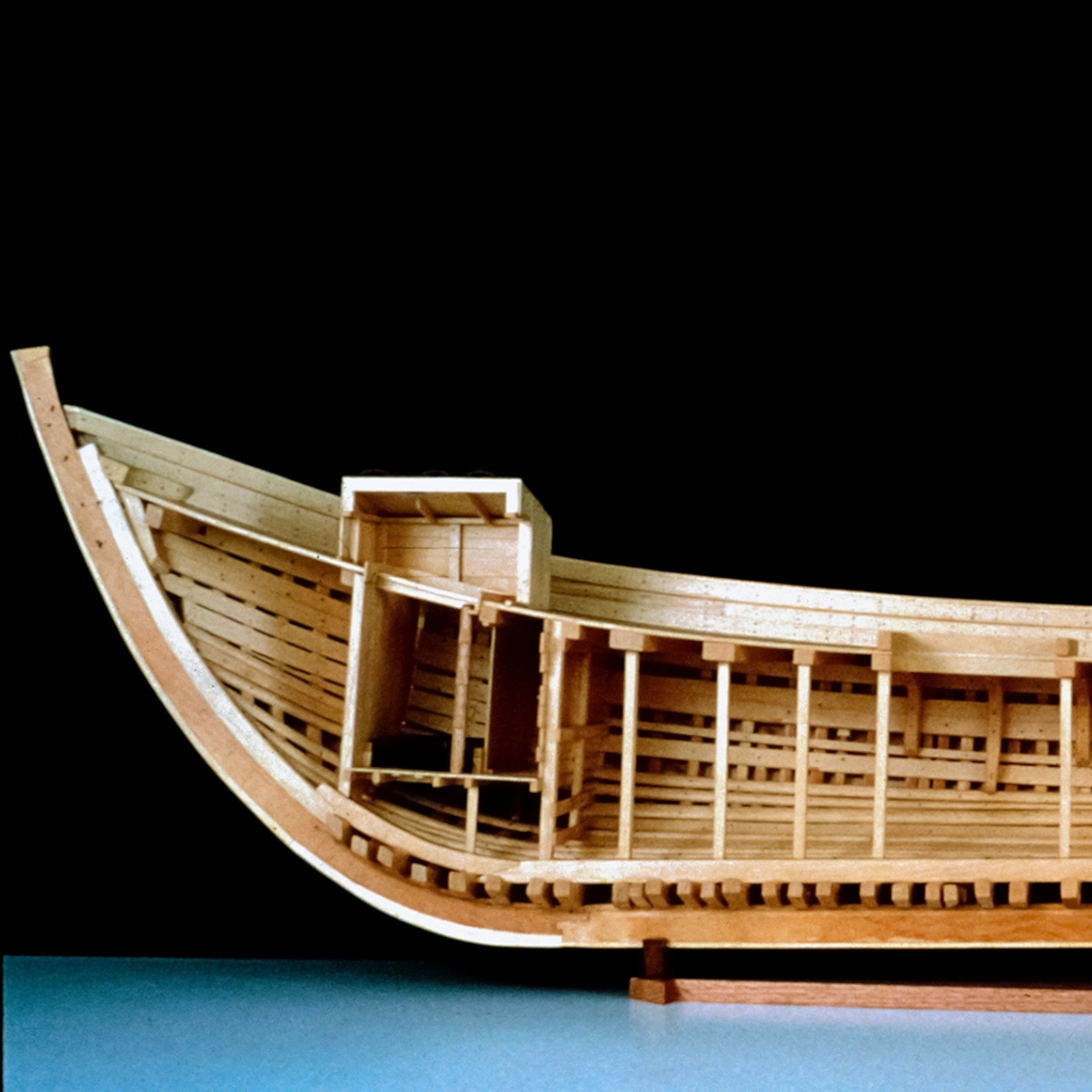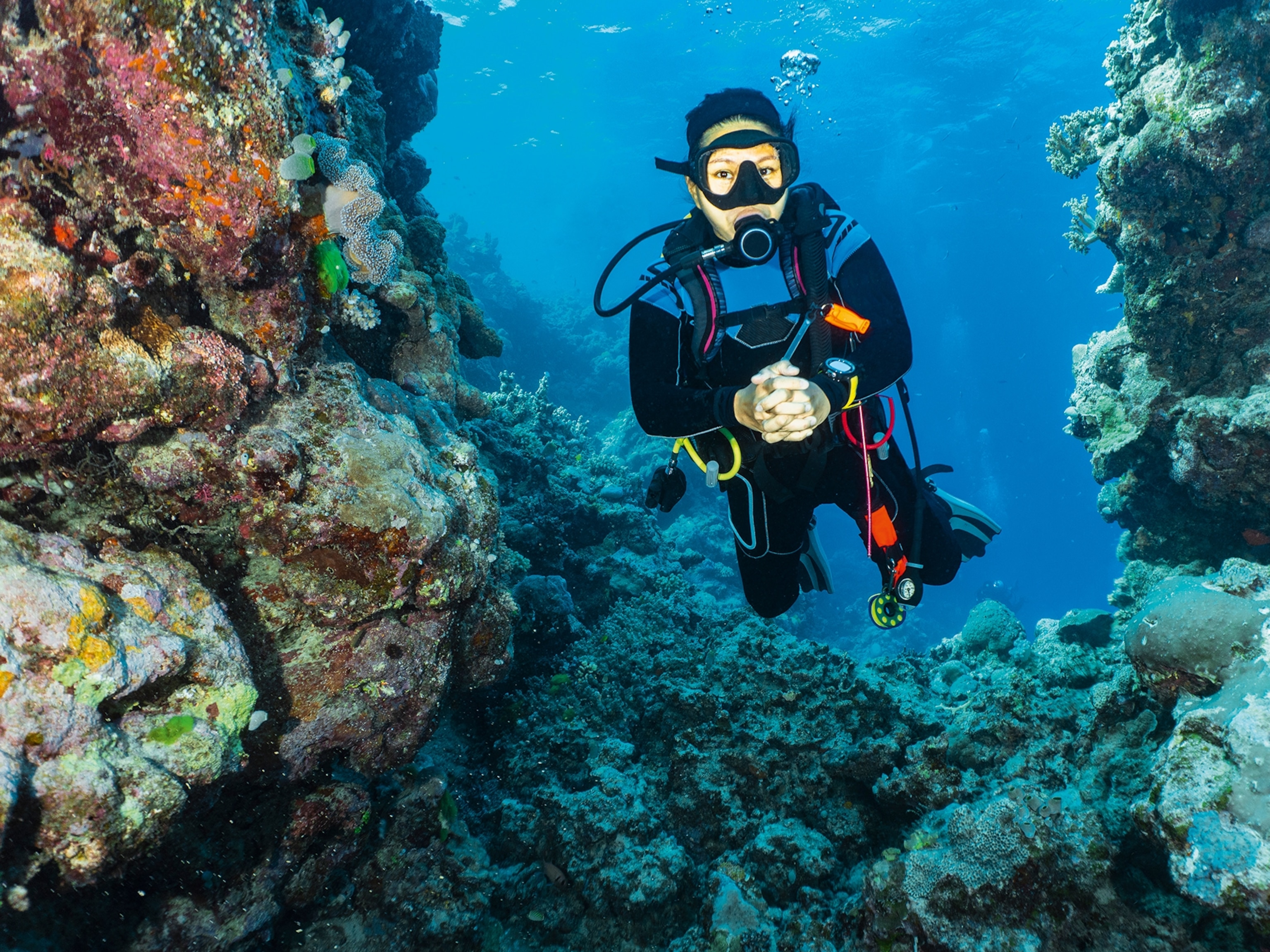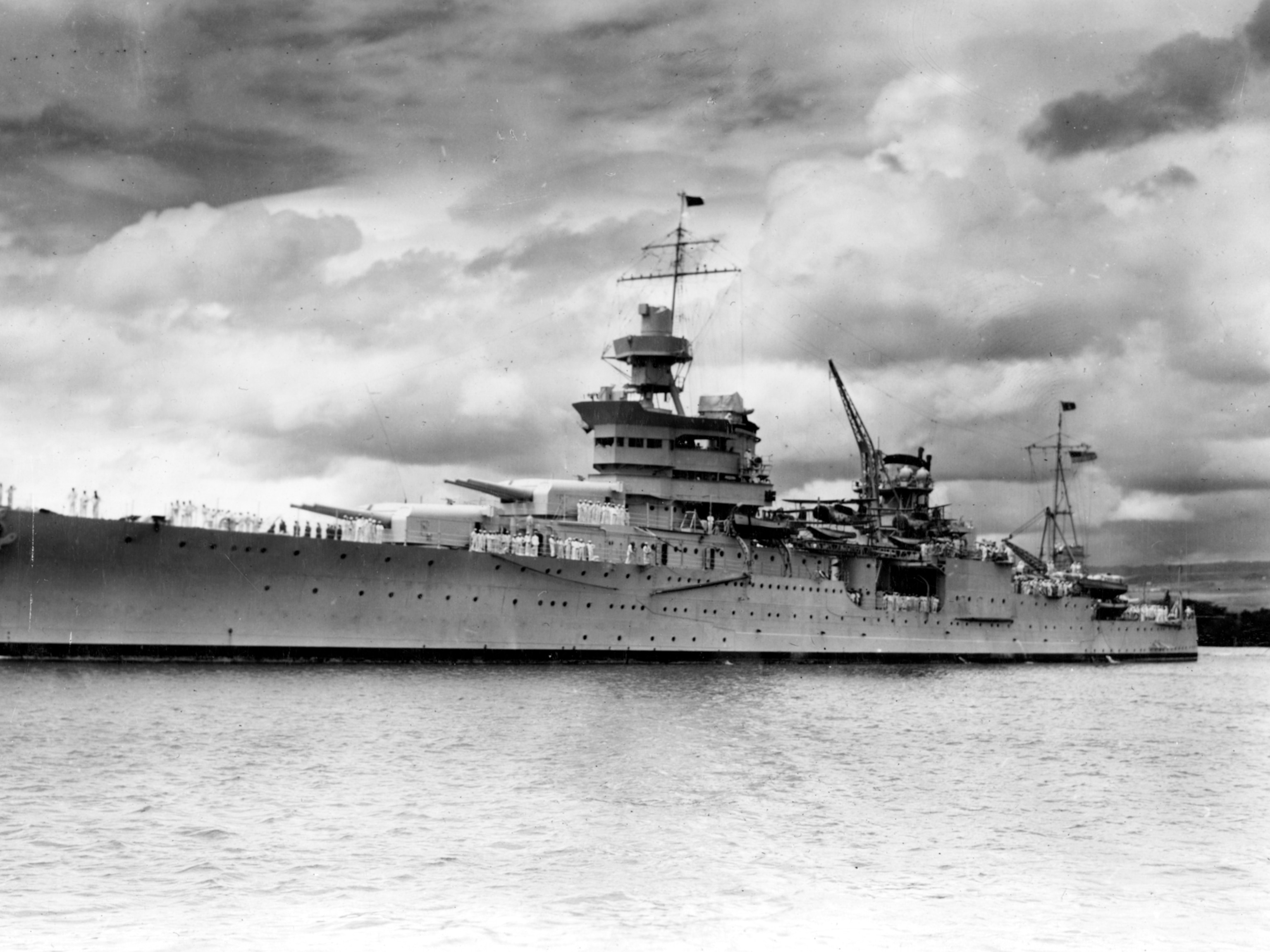
Inside the Original Space Dive: Joseph Kittinger on 1960 Record Jump
Record-setter's personal account in classic National Geographic article.
This October sky diver Felix Baumgartner is set to step out of a pressurized, Apollo-like capsule and free-fall 23 miles (37 kilometers) from the edge of space—the culmination of the Red Bull Stratos project. Fifty-two years ago, though, U.S. Air Force pilot Joseph Kittinger accomplished nearly the same thing. In a duct-taped suit. From an open-air gondola.
Here, Kittinger offers a personal account of his record-setting skydive, originally published in the December 1960 issue of National Geographic magazine. (Note: National Geographic News will broadcast live video of Felix Baumgartner's jump, followed in November by Space Dive, a National Geographic Channel documentary.)
*****
Overhead my onion-shaped balloon spread its 200-foot [61-meter] diameter against a black daytime sky. More than 18 1/2 miles [30 kilometers] below lay the cloud-hidden New Mexico desert to which I shortly would parachute.
Sitting in my gondola, which gently twisted with the balloon's slow turnings, I had begun to sweat lightly, though the temperature read 36° [-38° C] below zero Fahrenheit. Sunlight burned in on me under the edge of an aluminized antiglare curtain and through the gondola's open door.
In my earphones crackled the voice of Capt. Marvin Feldstein, one of our project's two doctors, from ground control at Holloman Air Force Base: "Three minutes till jump, Joe."
I was ready to go, for more reasons than one. For about an hour—as the balloon rose from 50,000 to 102,800 feet [15,200 to 31,000 meters] above sea level—I had been exposed to an environment requiring the protection of a pressure suit and helmet, and the fear of their failure had always been present. If either should break, unconsciousness would come in 10 or 12 seconds, and death within two minutes.
In our altitude-chamber flights at the laboratory, I always knew that if something went wrong, the chamber pressure could be increased immediately, returning me to safety. Doctors stood just a few feet away, watching through a porthole for any sign of malfunction. But here in the eerie silence of space, I knew that my life depended entirely upon my equipment, my own actions, and the presence of God. [See classic pictures of Kittinger's skydive.]
Aerodynamically, space begins about 120 miles [190 kilometers] from earth. Physiologically and psychologically, however, it starts only 12 miles [19 kilometers] up, where survival requires elaborate protection against an actual space environment. Thanks to my dedicated Project Excelsior team, I had twice before penetrated this realm in an open gondola to make test jumps from 14-mile [23-kilometer] heights. Now I had climbed to 19 1/2 miles [31 kilometers] above sea level, where the physical and mental hazards were much greater, for a more conclusive test of our space-survival and parachute escape systems.
The idea of men reaching toward space with balloons and parachutes in the age of jet planes and rockets may seem strange. Actually, it makes the best kind of sense. No powered aircraft can put man into a space environment and keep him there for a sustained period of time. But the lighter-than-air balloon, man's oldest flight vehicle, can.
Twenty-five years ago last month, two Army Air Corps captains, Albert W. Stevens and Orvil A. Anderson, took the balloon Explorer II to the then unprecedented height of 72,395 feet—13.71 miles [22 kilometers]. Their pressurized gondola and its instruments constituted a two-and-a-quarter-ton payload. Results of this famous National Geographic Society-U.S. Army Air Corps stratosphere flight are studied by airmen to this day.
To understand the need for a high-altitude escape system, consider the plight of an airman who has to bail out above 20,000 feet [6,000 meters]. He faces two choices, either of which could be fatal. Should he open his chute immediately after bail-out from a speeding craft, he risks death from his canopy's opening shock, from lack of oxygen, or from severe cold. [See "Supersonic Skydive's Five Biggest Risks: Boiling Blood, Deadly Spins, and Worse."]
Flat spin imperils him if he tries to fall free to lower, livable altitudes before opening his chute. His body may whirl like a runaway propeller. Flat spin is a characteristic of any falling object that is aerodynamically unstable. Dummies dropped from balloons up to 100,000 feet [30,500 meters] have attained 200 revolutions per minute, whereas tests show that 140 r.p.m. would be harmful, possibly fatal.
The problem was to get a man down fast to lower levels before opening his chute, but at the same time to safeguard him against flat spin. The answer came from Francis Beaupre of the Air Force's Aerospace Medical Division. His organization is part of the Air Research and Development Command's Wright Air Development Division, which directed our project. Beau asked himself: Why not use a small parachute to stabilize a man during free fall, as a sea anchor steadies a ship? He started to work on what was to become the Beaupre stabilization parachute, one of the few major innovations in parachutes since the seat-pack type won the approval of the Army back in 1919.
Beau's chute consists of three units: a conventional, spring-type chute to catch the wind and provide the pull to open the next unit; a 6-foot-wide stabilization canopy to prevent flat spin during free fall; and finally a conventional 28-foot [8.5-meter]chute to open at about 18,000 feet [5,500 meters].
[Also see "Supersonic Skydive's 5 Biggest Risks: Boiling Blood, Deadly Spins, and Worse."]
Parachute Opens Too Soon
In October, 1959, we made the first jumps with the Beaupre parachute, leaping from a C-130 Lockheed Hercules at 28,000 feet [8,500 meters]. I made the first leap, M/Sgt. George A. Post the second, and Capt. Harry Collins the third. The chute worked beautifully, and we felt ready for higher altitudes.
But something went wrong on my first bail-out from a balloon, on November 16, 1959. Before I jumped from the gondola at 76,400 feet, the timer lanyard of the stabilization unit was pulled prematurely and the 6-foot [180-centimeter] canopy and shrouds popped out after only two seconds of free fall, instead of 16, promptly fouling around me.
At first I thought I might retard the free spin that began to envelop me, but despite my efforts I whirled faster and faster. Soon I knew there was nothing I could do. I thought this was the end. I began to pray, and then I lost consciousness.
I owe my life to my emergency parachute, set to open automatically at 10,000 feet [3,000 meters]. When I came to, I was floating lazily down beneath the beautiful canopy of the emergency chute. I want to tell you I had a long thank-you session with the good Lord right then and there.
I knew that Beaupre's ideas were sound, despite the results of the first jump, and by December 11 we were ready to prove it. This time I jumped from the gondola at 74,700 feet [23,000 meters], and everything worked perfectly.
Next came the big test, Excelsior III, from above 100,000 feet [30,500 meters]. The date was August 16, 1960. Vivid in my mind as I swung there were the events of the past few hours.
Jump Project Goes Into High Gear
Our project really begins to gain speed on the eve of the jump. Alerts go out to the launch crew, ground control station, Holloman base weathermen, and all support units. Clearance for use of the White Sands Missile Range, the approximately 100-by-40-mile [160-by-64-kilometer] test basin, is obtained from the Army. We brief our own crew and the pilots of the support aircraft.
Technicians swarm around the 4 1/2-foot-wide [140-centimeter-wide] gondola. First Lt. Don Fordham and civilian Don Griggs check the electronics control systems. Airman 1/c Frank Hale, a parachutist himself, joins Beau in testing canopies, shrouds, cables, and lanyards. Another veteran jumper, Capt. Billy Mills, our cigar-chewing assistant project officer, oversees prelaunch check lists of more than 1,000 entries.
The gondola's 12 camera eyes—including one provided by the National Geographic Society—are mounted by Ken Arnold and Gene Gallatin. Plastic water bottles and aluminum foil shield the cameras and other equipment against the cold.
As launch-day-minus-one progresses, I come under the close scrutiny of our two project physicians. For a week I have been on a high-protein, low-residue diet, and I avoid gas-producing foods. Gas expands with increasing altitude, so that air trapped in my stomach or intestines could cause pain so severe that I could be forced to jump prematurely. The diet is mainly meat and potatoes.
The doctors also take a final look at ears, nose, and throat. Any air pocketed in the body could force me down too soon.
By afternoon, work halts for most of our team, but our weathermen, Duke Gildenberg and Ralph Reynolds, are facing their most intricate task. They must bring me to earth in an 11-mile-square [18-kilometer-square] target area about 25 miles [40 kilometers] northwest of Holloman. They must predict weather conditions for the following morning high aloft as well as on the ground, and decide if surface winds will permit a safe take-off. Checking with Holloman base weathermen, they reach a favorable decision and choose an abandoned dirt airstrip 18 miles [29 kilometers] from the base as the launching site.
Forty-five minutes before midnight a convoy of some 20 vehicles heads northeast through Alamogordo. Frightening jack rabbits as they turn onto the old airstrip, vehicles wheel into position amid mesquite and greasewood. Mobile generators start, communications antennas are mounted, and the first of the hourly pilot balloons, called pibals for short, wavers aloft to provide a wind reading.
The gondola, on a flat-bed truck, becomes the center of activity as it gets a final grooming. Some 300 feet [90 meters] away, T/Sgt. Melvin D. Johnson directs the balloon launching crew.
Ground Crew to Monitor Flight
At Holloman the men who operate the ground control station begin reporting for duty at midnight. They will monitor my progress over radio and radar networks, plot my position, advise me when to valve and when to ballast, and, finally, give the word on when to jump.
Ten minutes after I bail out, ground control will beam the signal that will cut the gondola from the balloon, returning it and its valuable instruments to earth by parachute.
At first this method was risky because chance radio signals could also act as a trigger. In 1955 a balloon gondola—luckily with no human passengers—was cut down when a commercial station blared "Tiger Rag."
Dave Willard, electronics chief of the Holloman Balloon Branch, solved the problem. He developed a transistorized device that serves, in effect, as a skyborne lock which only a special electronic key transmitted from the ground station will open. I can go up now with full assurance that no burst of jazz or rock 'n' roll will end the flight prematurely.
I am the only man who gets a chance to sleep late before a launch. About 1:30 on the afternoon preceding the flight, Mary Feldstein hands me two sleeping pills and a medical journal, his sure prescription for sleep.
About 7 p.m. I awake for a steak supper. Still sleepy, I rest four hours longer. Then Beau Beaupre announces: "Captain Joe, time to wake up."
It has become a tradition that Beau and Ken Arnold drive me to the launch site. It is also traditional that we stop for breakfast, which this time consisted of orange juice and strawberry shortcake. As I finish my meal, I tell Beau:
"That sure was a good breakfast, and it's nice of you to pay for it."
Of course, Beau hasn't yet offered to pay, but he does, because this also is traditional. I always like to be in debt when I jump.
We reach the launch site at 2 a.m. and find Duke Gildenberg uneasy. Clouds moving up from Texas complicate weather prediction.
George Post tells me the flight clothing is ready. The Air Force's most experienced test parachutist, he has been jumping since 1943 and wears the Distinguished Flying Cross. It is good to know that he will be watching every piece of my gear. He, better than anyone else, knows the stress to which I and my equipment will be exposed.
One item of business remains. The previous week, my five-year-old son Mark was eating breakfast at our Dayton, Ohio, home when he noticed a car license plate printed on his box of cereal. He decided that his father's gondola should be properly licensed, so he clipped the tag from the box and had his mother mail it to me. As I watch, it is carefully taped to the gondola.
The license tag is that of the State of Oregon. Our Project Excelsior group is stationed in Ohio, we are launching in New Mexico, our team members hail from several States. Truly we have a national effort.
Oxygen Guards Against Bends
At 3 o'clock I enter the trailer that we use as a dressing room. Here I start breathing oxygen, and I will not take a breath of natural air until I reach lower altitudes on my descent, some four hours later. This gets most of the nitrogen out of my body. With increasing altitude, nitrogen forms bubbles that expand, cause severe pain, and can be fatal—an ailment known as the bends, which also threatens divers.
As I begin breathing oxygen, I relax on a cot before beginning to dress. I am profoundly aware of the activity around me, and I feel strengthened at the thought of our team's thoroughness and enthusiasm. Some people may wonder how I could enjoy any degree of equanimity in view of the job ahead, and I think that the answer lies in a four-point philosophy that I have developed:
I must have confidence in my team.
I must have confidence in my equipment.
I must have confidence in myself.
I must have confidence in God.
Secure on these four points, a man can face almost anything. In fact, I had been able to doze off for a few minutes at the launch site before my jump in November of 1959.
At 3:30 o'clock, T/Sgt. R. A. Daniels and T/Sgt. Eugene Fritz start to dress me. Outside, our mobile cooler roars to life, and a blast of cold air lowers the dressing room temperature to 50° F [10° C]. The chilled air keeps me from sweating as I put on layer after layer of clothing. Perspiration would cause trouble in the cold realm where I am going.
As Johnny and his crew begin to inflate the balloon, the prospect of cancellation arises. The cloud build-up is continuing, and Duke Gildenberg advises a brief wait. The decision is up to Maj. Irving Levin, Holloman Balloon Branch chief.
At this point the air conditioner sputters and seems about to die. With two possible causes for cancellation, our spirits fall.
By 4:30, however, weather prospects have brightened, and take-off time is reset from 5 o'clock to 5:30. And the air conditioner is coaxed back to life. Everyone cheers up.
The inflation of a large balloon is a dramatic sight. The big bag seems so lifeless as it lies formless on the ground. But now it begins to mount skyward like some giant plant, its crown blooming like a flower. When I see its silhouette in the pale dawn, I know the mission is nearing reality.
Just before 5 o'clock I leave the dressing trailer, a bent and shuffling figure under 155 pounds [70 kilograms] of gear—just three pounds [one and a half kilograms] less than my own weight. Beau and Daniels lift me to the truck bearing the gondola, then up that "highest step in the world."
Red Flare Signals Warning
I am still breathing oxygen. The air-conditioner hose, with an eight-inch [20-centimeter] diameter, is shifted from the trailer, and its flow is directed over me. Team members make final checks: electrical circuits, safety plugs, radios, parachutes, cameras, partial pressure suit, oxygen. The helmet is lowered over my head, and suddenly I feel a man apart. [Pictures: Space Suit Evolution Since First NASA Flight.]
A red flare arcs across the desert, announcing to all that take-off is just 10 minutes away. The truck trundles me and the gondola to a spot directly beneath the balloon—now towering 360 feet [110 meters], tall as a 33-story building.
Balloon and gondola are connected. Dan closes and locks my face plate, two layers of clear plastic separated by an almost transparent film of gold through which an electric current passes to prevent fogging. The aluminized curtain is hung around the gondola above my head to reduce my exposure to solar radiation.
"Well, I believe we're about ready to go," says the Virginia drawl of Billy Mills over the interphone.
"Fire one!" Sergeant Johnson snaps.
The explosive squibs that hold balloon to crane boom fire sharply, cutting the lines, and the rig is now restrained only by straps that connect the tugging gondola to the truck.
"Fire two!" comes the final command.
A second round of squibs fires, cutting the truck straps. At 5:29 a.m. I am on the way up, rising at 1,200 feet [370 meters] a minute.
In statistical terms, a 1,069-pound [185-kilogram], helium-filled balloon has begun to lift a 1,250-pound [570-kilogram] payload from a launch elevation of 4,500 feet [1,370 meters] to a maximum altitude of 102,800 feet [31,000 meters]. My interest in 158 pounds [72 kilograms] of that payload goes beyond the statistical, however. I ponder the maxim known for some reason as Murphy's First Law: "What can go wrong, will go wrong." And I wonder what could go wrong.
At 43,000 feet [13,100 meters] I find out. My right hand does not feel normal. I examine the pressure glove; its air bladder is not inflating.
The prospect of exposing the hand to the near-vacuum of peak altitude causes me some concern. From my previous experiences, I know that the hand will swell, lose most of its circulation, and cause extreme pain. I also know, however, that I can still operate the gondola, since all the controls can be manipulated by the flick of a switch or a nudge of the hand.
I am acutely aware of all the faith, sweat, and work that are riding with me on this mission. I decide to continue the ascent, without notifying ground control of my difficulty.
Tropopause Barrier Looms Above
I am already approaching the halfway mark in vertical distance, but in terms of obstacles to be faced, I still have far to go. One is the tropopause, an atmospheric boundary where I will encounter the coldest temperatures of the flight. There the balloon's polyethylene fabric—only two-thousandths of an inch thick and of the same filmy material used to contain some frozen foods and dry-cleaned clothes—will become almost brittle from the cold. Any undue strain can cause a rupture. About half of balloon failures occur at the tropopause.
The temperature drops steadily until it reaches -94° F [-70° C]. at 50,000 feet [15,200 meters], then starts to rise. I have safely passed the tropopause barrier.
Propelled by the prevailing westerlies, the balloon has drifted 15 miles [24 kilometers] east of the launch site. However, easterlies start me back toward the target area as predicted. But the clouds, now far below me, fail to act according to forecast. Instead of thinning under the sun's heat, they thicken.
Every balloon has a drag limit, the point at which its upward velocity creates a drag strong enough to threaten damage. At 60,000 feet [18,300 meters], my ascent rate approaches 1,300 feet [400 meters] per minute, only 100 short of the balloon's limit. Gildenberg, back at Holloman, is monitoring my ascent and asks me to valve off some helium. I do so, and my climb slows to a safe 950 feet [300 meters]per minute.
As Marv Feldstein continues to advise me from ground control, I can sense that the tension there is growing. Our weathermen have spotted a small hole in the clouds, west of the target area, and are figuring whether the hole will enlarge and whether the balloon will drift above it.
The device that traces my pulse and breathing on a paper tape has broken, and two pretty nurses have been recruited to record the audio heart-respiratory signal. In effect, they are taking my pulse by remote control, but I think I prefer the old-fashioned way.
An hour and thirty-one minutes after launch, my pressure altimeter halts at 103,300 feet [31,500 meters]. At ground control the radar altimeters also have stopped—on readings of 102,800 feet [31,300 meters], the figure that we later agree upon as the more reliable. It is 7 o'clock in the morning, and I have reached float altitude.
Help Lies Too Far Away
A mixed feeling of awe and remoteness has been building up all through the ascent, and now it almost overcomes me. I feel awe at the thought of floating easily at a height that man has never achieved before without the protection of a sealed cabin. I feel remoteness because I am beyond reach of help and friends if anything should go wrong.
I want to describe my impressions of this high, alien world. Striving for the right words, I send a message to ground control:
"There is a hostile sky above me. Man will never conquer space. He may live in it, but he will never conquer it. The sky above is void and very black and very hostile."
I am grateful that the balloon revolves slowly, because I have a chance to sweep the horizon through the gondola's open door.
I note the change in the sky's hue: normal blue to about 15 degrees above the horizon, then increasingly dark until it attains the inky depth of night around the balloon. Such a dark sky without stars seems strange, but I stare in vain to find just one.
I make one exciting discovery. There are clouds at my altitude. They are so thin that I see them only when my vision comes within 30 degrees of the sun, but then they reflect the light with a dazzling whiteness. I remember reports of clouds this high, but the actual sight of them is fantastic.
I turn my gaze to the earth below me. I should be able to sweep a 780-mile-wide [1,255-kilometer-wide] circle of the surface, but haze curtains the horizon, and large segments of clouds blot out much of the nearer landscape. I easily make out the towering head of a thunderstorm that a weather check later plots near Flagstaff, Arizona, 350 miles [560 kilometers] distant.
Burdened by heavy clothes and gear, I begin to pay the physical toll for my altitude. Every move demands a high cost in energy. My eyes smart from the fierce glare of the sun. When it beams in the gondola door on my left side, I feel the effect of strong radiation and begin to sweat. On my right side, mostly in shadow, heat escaping from my garments makes a vapor like steam. Circulation has almost stopped in my unpressurized right hand, which feels stiff and painful.
After nine minutes at peak altitude, I begin to think of the descent and call ground control for an estimate on jump time.
The hole in the clouds has failed to enlarge. Meanwhile, a 30-knot wind speeds me west. Duke decides that I should step out over the target zone, despite the thick blanket that covers it. Marv relays the word: "Three minutes till jump, Joe."
The words are welcome. Activity comes as a relief to the surge of emotions I have experienced, despite the big drop ahead of me. Besides, the big drop is the only way home.
At X-minus-70-seconds, I drop the trailing antenna, cutting communications with the ground. I begin my countdown, severing one by one my ties to the gondola. My seat kit with its instruments and camera takes over the functions of supplying my oxygen, recording my heart and respiratory rate, keeping records of my altitude and azimuth.
I start the cameras in the gondola, and their clicking makes me abruptly aware of how silent my stay in space has been.
At zero count I step into space. No wind whistles or billows my clothing. I have absolutely no sensation of the increasing speed with which I fall.
I drop facing the clouds. Then I roll over on my back and find an eerie sight. The white balloon contrasts starkly with a sky as black as night, though it is 7:12 in the morning and I am bathed in sunshine. Again I look for stars, but see none.
When the 6-foot [180-centimeter] stabilization canopy pops out, I already have dropped to about 96,000 feet [29,300 meters]. I am delighted to find myself perfectly anchored against the dreaded flat spin. I turn with ease by sticking out an arm and leg.
However, a new danger threatens. Soon after I become stabilized, I feel a choking sensation. I had experienced the same thing on a previous jump, and we had devoted countless tests to eliminating it. As I plummet lower, the sensation eases but worry remains.
Free Fall Ends in Blanket of Clouds
The clouds, which seconds before seemed motionless and remote, now rush up at me. I have never entered clouds in a free fall before, and I have to persuade myself that they are mere vapor and not solid earth.
At 21,000 feet [6,400 meters] the thick blanket envelops me. Some 3,500 feet [1,000 meters] lower, and 4 minutes, 38 seconds after my fall began, my main canopy pops open. I can see neither sky nor ground, but I know the worst is over.
As I disarm my emergency chute and begin disconnecting my seat kit, I escape clouds at 15,000 feet [4,600 meters] and behold a beautiful sight—two helicopters circling attentively. I know that recovery trucks speed toward my landing site.
I detach the seat kit except for a single line. My swollen right hand lacks the strength to unfasten that final tie, and I can't reach it with my left. A thousand feet [300 meters] above the desert, I stop trying. I will have to land with the heavy box dangling awkwardly at my side.
The landing is as hard as any I have ever made in my life. The seat kit strikes my leg, inflicting a severe bruise. But I am on the ground, apparently in one piece. I am surrounded by sand, salt grass, and sage, but no Garden of Eden could look more beautiful. The elapsed time since bail-out is 13 minutes, 45 seconds.
The helicopters land, and George Post, Gene Fritz, Beau, and Dr. Dick Chubb dash toward me, all wearing big smiles. They remove my helmet and heavy flight garments.
Dick looks at the swollen hand with concern. Three hours later the swelling will have disappeared with no ill effect.
As clean, fresh air washes over me, I say, "I'm very glad to be back with you all."
Just before jumping, I had said a prayer, "Lord, take care of me now." After the main chute opened I said, "Thank you, Lord, for taking care of me during that long fall."
Now that I am safely down, I realize once again how dependent upon the protection of the Almighty are all seekers of the unknown.
Next day we plunged ahead with plans for a jump by George Post, which was to be an exact duplicate of mine. First we had to pinpoint the cause of the choking experience that worried me during my descent.
We held a "hanging," a test in which we put on full equipment and suspended ourselves by parachute harness from overhead hooks. We found a tentative cause: The steel cable that anchored helmet to pressure suit seemed to be riding up, forcing the helmet and front of the neck ring against the throat.
But other possibilities had to be eliminated before we could risk a man's life. Reluctantly we decided to cancel George's jump.
Balloons Float High and Long
We are convinced, however, that the potential of balloons for high-altitude research has barely been scratched. Consider, for example, that my balloon had by no means exhausted its ability to keep me at peak altitude. It could have kept me there for hours. Though experimental aircraft have taken men higher, they have held their peaks for mere seconds.
Consider, also, just one finding of my Excelsior III jump. Doctors now know that, although my pulse rate hit 156, a healthy man properly equipped can safely expend tremendous energy in space for brief periods.
Consider that solar radiation quickly caused me to perspire, though the temperature at float altitude read -36° F [-38° C]. This experience backs evidence that temperature definitions break down in space. You can bake on one side, freeze on the other, regardless of what the thermometer says.
Consider that my open-gondola ascent and parachute jump exposed me to space conditions longer than any other man, without harmful effects.
For the future, I can see at least three distinct categories in which manned balloons can play a valuable role in space research.
First, there is astrophysics. The earth's atmosphere, a curtain of diffuse substances, bends light rays, hides entire galaxies from view, and makes stars seem to twinkle when they don't at all. If we could put an astronomer with a telescope in a gondola and take him aloft for an unimpeded view, we would see the heavens with new eyes.
Second, the balloon can test life-support systems for space. A complete life-sustaining system can be taken up, component by component, and be proved under actual performance conditions.
Third, the balloon can be a perfect trainer for spacemen. Though you isolate men in laboratory spaceships, the trainees know that help is just a few feet away. In a balloon miles above the earth, assistance is a long way off, and the trainee would learn his job with that fact in mind.
When I think of the great possibilities of the balloon, I marvel that it has been so little utilized in man's bid to enter space. I earnestly hope we will not fail to take advantage of the lessons high-altitude balloon flights can teach us before we commit a man to the infinite reaches beyond the world we know.








